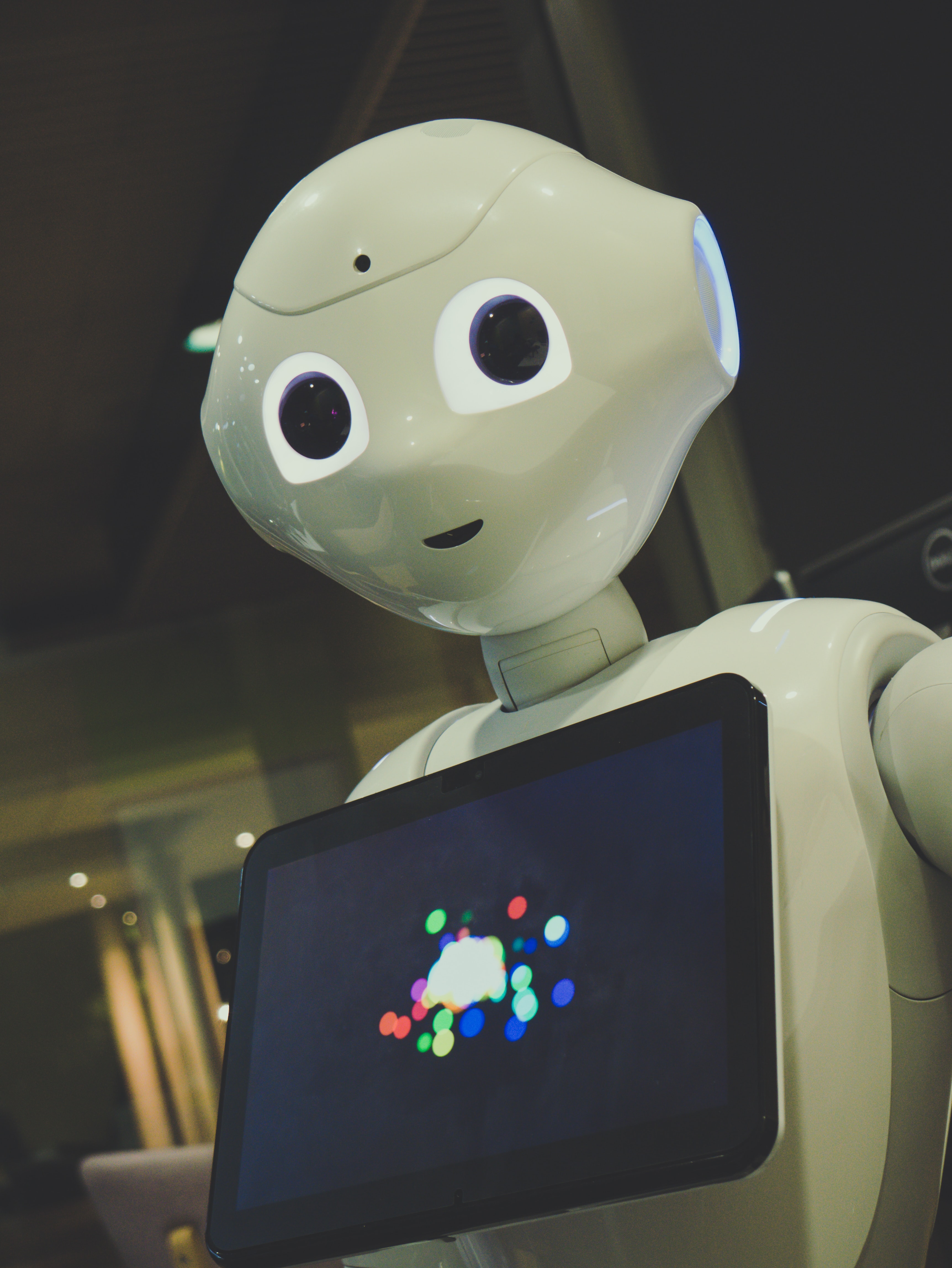By Tiffany Harper
 Photo by Owen beard unsplash
Photo by Owen beard unsplash
There have been many consequences of the COVID-19 pandemic already. The concept of social distancing was nonexistent before the pandemic, but it's something that we all have to live and work by now. Everybody is now subjected to the use of a nose mask while also trying to keep a distance of 6 feet from the persons around them. It’s a lot to live by, yet the world has not changed.
Industries and companies have responded to the gap which Covid creates in different ways. People that can afford to work remotely are working remotely, but then goods delivery has to continue, someone needs to clean the workplaces, and people need to receive medical attention. All of these require close interaction that the world can’t afford now, thanks to the virus. That’s why the world is now turning to robots to fill the void.
As stated in an article on top essay writing services UK platform, many companies are using service robots to cover the social gap that social distancing has created.
One thing that stands out societally since the start of the pandemic is the lack of companionship that many people have had to deal with. The sad reality is that it cuts across different age groups: from the young and middle-class age to the seniors.
People with pets will appreciate their companionship with the pets even more, but not everyone has that luxury. This is even truer for the seniors and those with conditions such as Alzheimer’s disease and related dementias (ADRD). It’s hard for them to own or care for a pet, and the pandemic has ensured that they are left alone for a long time.
According to researchers from Christin E. Lynn College of Nursing, Florida Atlantic University, interactive robotic cats provide a good enough solution for comforting and engaging seniors with ADRD. This bot is designed to be responsive to touch, sound, and motion. Therefore, it can provide the companionship that they need and act as an alternative to pets. These robotic pets are commonly given to people that are battling ADRD, but it is also known to be highly successful for reducing social isolation for seniors.
Bryanna Streit, D.N.P., lab report writer at Christin E. Lynn College of Nursing, demonstrated in some custom papers that these interactive pets can help the fight against depression and social isolation among the older people and those that have ADRD. This is because it helps to improve their overall mood and their quality of life as well. This also helped family caregivers as their work is made more comfortable, so they are less stressed. The companion pet also allows the seniors to engage more with their environment and other older adults around them.
Interactive Pet Robots
It is not surprising to see the kind of capacity these robots have or those things they can do. They designed many of these robots to be able to play different forms of social roles. They appear very different from you just handling an advanced mechanical toy as they are created with the capacity to sense and respond to the environment that they’re in.
These robots are created to mimic animals commonly used as pets such as dogs and cats and can respond with comforting meows and barks like animals. However, some other robots are created with more human-like features, such as talking and engaging in little friendly conversations. Some robots can tell you jokes, read the bible to you, play music and dance with you, etc. These days, there's a lot more to expect from interactive robots than you would think.
Again, it shouldn’t surprise you that some of these robots are designed to carry out physical caregiving tasks. Some robots can feed you, take you out of bed and onto a chair, bathe you, etc. These robots are, without a doubt, beneficial for dealing with older adults. Most of these robots are not newly designed. They’ve been around and in use for many years now and haven’t failed. However, the pandemic and the need for social distancing have increased their importance to society, mainly to provide a companion for older adults who are COVID-19 high risks.
There is also research to show that when people interact with these social robots, it improves their well-being. This might vary among individuals with their cultural context, and it also depends on the type of robot they are interacting with.
The use of social robots for a companion for older adults come with several benefits. Firstly, the robotic caregivers will never become frustrated or impatient, unlike humans. It is also impossible for them to forget important details, such as a doctor’s appointment, a pill, etc. One of the common problems among human caregivers looking after elders is their tendency to abuse and defraud. This is impossible with a social robot.
The fact that we are forced to stay apart and be socially distant from people during the pandemic has highlighted another primary importance of these robots. Cloe human interaction during this period offers a risk of contracting and spreading the virus but not with robot interaction. The robots can always move close to the seniors and be their companion without the risk of spreading the virus to them. This is why many people see these robots as the solution to isolated older adults and those people that are COVID-19 high risk.
Robots as Learning Companions
The companionship that robots, mostly interactive pet robots, offer is not restricted to older adults alone. It is probably more pronounced with them because they need the care and are often isolated (and even more isolated during this pandemic)—however, the use of these robots for companionship cuts across different age groups.
According to an assignment writer at BrillAssignment, young ones, especially students, would also find the robots handy for them. This is because of the need for them to continue learning. As a result of schools not opening, online classes became the option for teachers and students to pick up from where they left off. While it is a good idea on its own, it is not something that many of these students are used to. So, they can get bored, disinterested, and even isolated from the rest of the world. In this case, the robots can provide them with companionship while they continue to learn. Talking to and interacting with the robots around them as they study will take away their feeling of isolation and make them more interested.
Conclusion
There’s a lot more that robots can do than the movies have pointed out. The coronavirus pandemic has increased the need and use of robots in almost all industries. As it appears, the caregiving industry is not left out. The older adults surely do not deserve to live in isolation for a year because of the pandemic and the resulting distance. Thankfully, these robots provide much-needed companionship.
Discover more about Robots with RobotLAB!

Author bio
Tiffany Harper is a training guru working in the corporate sector with dissertation help for many years. As she is a management graduate Tiffany loves to write blogs and analytical articles. Sometimes she provides an assignment help with subject-matter experts for essaywritingland.com.
